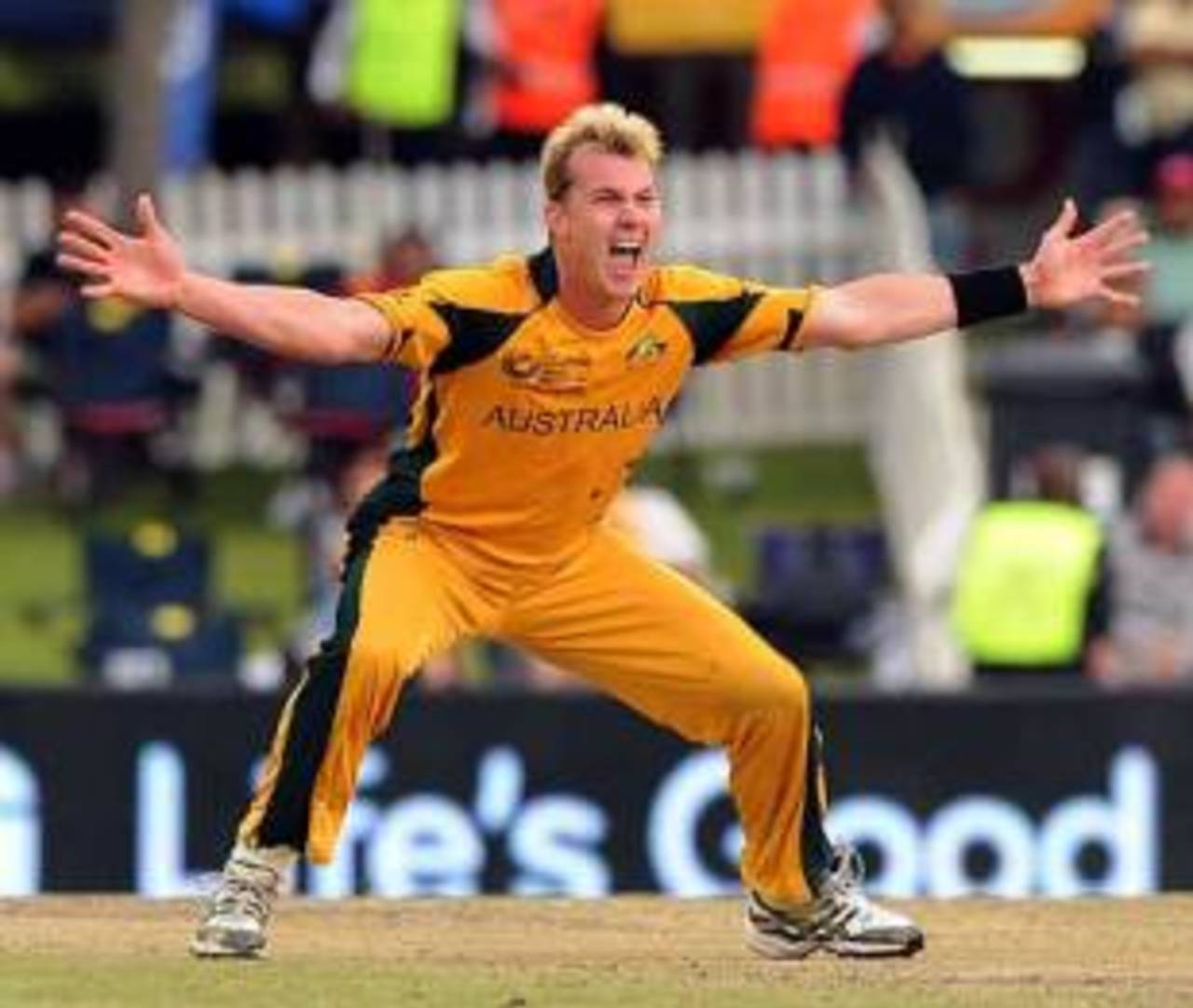Australia gamble on fear factor
The selectors have taken some risks with the make-up of their 15-man World Cup squad
Peter English
18-Jan-2011

Brett Lee is back in action, but his comebacks since 2009 have all been short-lived • AFP
This is almost Australia's best available World Cup squad but it doesn't look good enough to claim a fourth successive trophy. In the glory years the team had players right through the order who would frighten opponents. In the current state they need someone - anyone - to deliver a scare, which is why the selectors have gambled on the fitness of Brett Lee and Shaun Tait
Over the past year the two fast bowlers have spent more time lining up for x-rays than representing their country. Lee has just appeared in three internationals in a week, which is now a huge load for his 34-year-old body.
He is in excellent health and his bowling is slippery rather than rapid, but even at peak fitness the selectors were worried about his tendency to break down. While it's wonderful to see Lee's on-field energy again, especially after another gruelling rehabilitation, all his comebacks since 2009 have been short-lived.
Like Lee, Tait, who is seven years younger, is a part-time bowler who doesn't let his body bother with first-class fixtures. He has a wretched injury history and the physical demands and mental anguish forced him out of the game after his last Test in 2008. Tait is now a master of the short burst, a man growing rich on Twenty20s, but one who has turned out in only three ODIs since February 2009.
Four years ago he was the equal second-leading wicket-taker at the 2007 World Cup with 23 victims, but don't expect him to play every game this time. His elbow gave way after the Champions League Twenty20 in September and sometimes when he bowls it appears his arm is being held together by strapping tape.
If Ryan Harris, Clint McKay, Mitchell Starc and Josh Hazlewood had been fit, both fast men would have been struggling to make the squad. Now Lee and Tait will be the side's lead weapons, ordered to operate at full power whatever the cost to their patched-up frames. An injury on the eve of the IPL would be costly in so many ways.
Australia's attack will also have the misfiring Mitchell Johnson, Doug Bollinger, who is struggling for fitness, and the allrounders John Hastings and Shane Watson. Peter Siddle is the unlucky one, although he has been used in small bursts of 50-over games during the past two years. He was the side's most consistent Test fast bowler, but has been relegated by Hastings' superior batting and the pace of Tait and Lee.
There are four other players in Australia's squad who qualify towards the top end of the frightening scale, but only Shane Watson and Cameron White are fit. And they are not as intimidating as their predecessors Hayden, Gilchrist, Symonds and Co. Ricky Ponting is nursing a broken finger and Michael Hussey tore his hamstring so badly in Sunday's win over England that he needed surgery. Neither will play in the rest of the current series and while there is no rush for them to be back, Hussey's prognosis is extremely worrying.
Australia have a sombre start to the tournament, facing Zimbabwe on February 21 and New Zealand on February 25 before a break of a week ahead of the Sri Lanka clash. There are seven teams in the group, including Kenya and Canada, with four going through to the quarter-finals from March 23. That will give Australia's bit-part players, like David Hussey, Steven Smith and Tim Paine, a chance to feel their way into their maiden World Cup.
Nathan Hauritz is rightly back as the No.1 spinner - there is no spot for Xavier Doherty - following his increasingly unbelievable snubs during the Ashes. However, the muddled thinking of the selection chairman Andrew Hilditch remains. Earlier in the month Hilditch said the selectors had done "a very good job" during the Ashes defeat.
Today he said Hauritz's "one-day record in India is excellent", a comment to be filed in his expanding pile of outrageous statements. While he was right to say Hauritz will play "an important part" in the side's push for another trophy, Hilditch has not taken note of the offpsinner's most prominent results in the country.
Hauritz has four wickets at 70.75 in seven ODIs in India. He has never played a T20 international there, and his performances in the two Tests in Mohali and Bangalore in October convinced the selectors he wasn't right to face England.
Instead Hilditch could have pointed to Hauritz's economy rate, which is a very handy 4.56, or said something about his tight control, or that he now brings improved batting skills to his essential bowling role. To call Hauritz's India record "excellent" shows how little knowledge the chairman has of his subjects.
Naturally, Hilditch also thinks the squad is good enough to win the tournament. Sadly, it's 2011, not 1999, 2003 or 2007.
Peter English is the Australasia editor of ESPNcricinfo